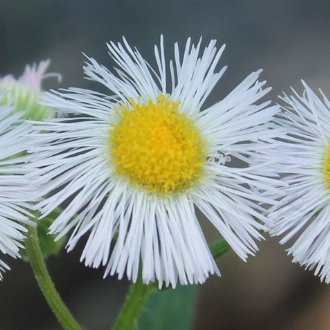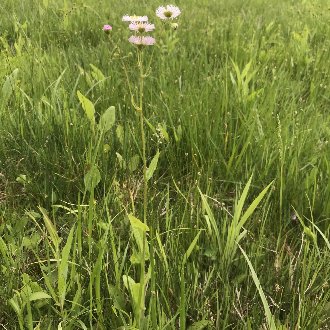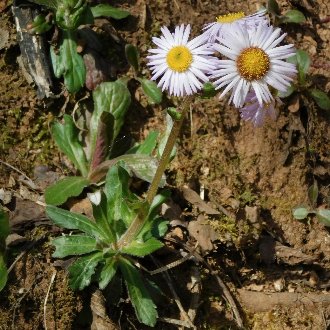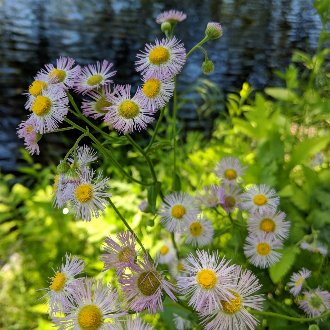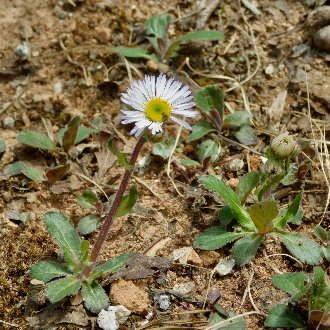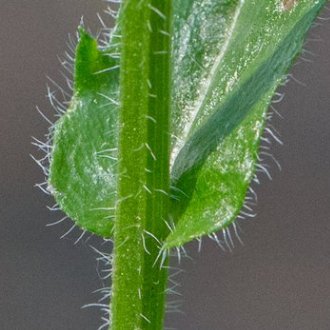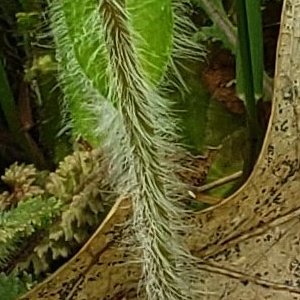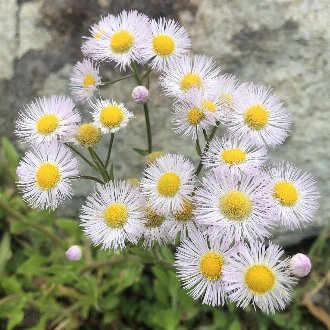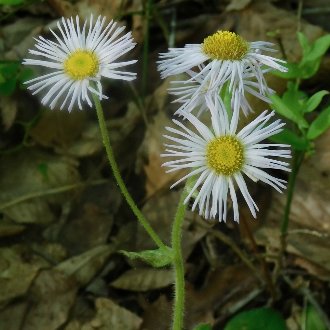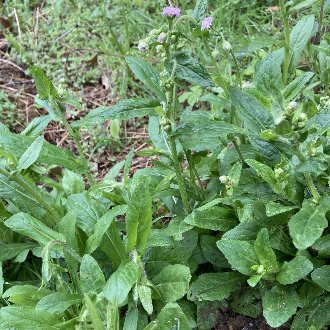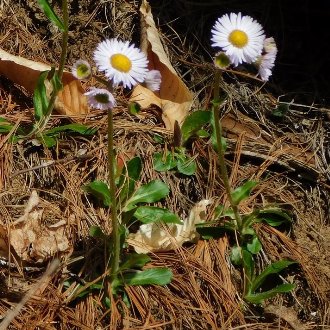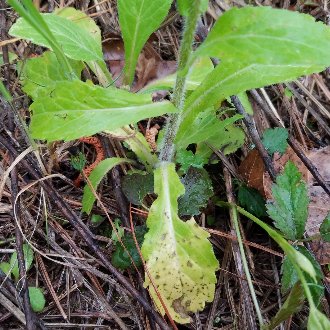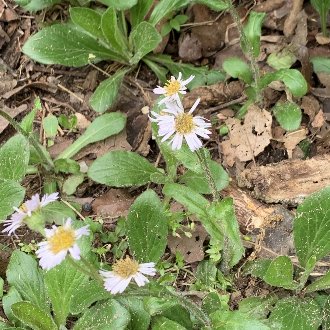Philadelphia Fleabane vs Robin's Plantain
These two species can be confused, as both have abundant basal leaves and clasping leaves along the stem, both can be found in lightly-shaded habitats, and they have overlapping bloom times. They are easily distinguished by flowers, and they also have little overlap in habitat, although differences in habitat may require close observation. E. philadelphicus has a broader range, is more common and widespread, and is found in a wider range of habitats, preferring moister, more disturbed habitats with richer soils, tolerating poor drainage, and ranging into full sun. E. pulchellus is more restricted to drier, less-disturbed, lightly-shaded habitats, in soil of low fertility.
Philadelphia Fleabane (Erigeron philadelphicus) | Robin's Plantain (Erigeron pulchellus) |
A common and widely-distributed biennial or short-lived perennial of moist sites, native across North America. | A perennial favoring slightly dry sites of low soil fertility in open woodlands. |
Flowers have much more numerous (150-250, rarely to 400), narrower rays (at most 0.5mm wide), leading to a wispy appearance. Photo © Violet T., CC BY 4.0. | Flowers have far fewer (50-80, rarely to 100), wider rays (0.8-1.7mm wide.) Photo © Scott Morris, CC BY 4.0. |
Plants average much taller, frequently to 80cm or about 2.5 feet. Note, some plants can still be very short. Photo © Alex Goodfriend, CC BY 4.0. | Plants average much shorter, usually 15-60cm, or about 6-24 inches. Photo © mjpapay, CC BY 4.0. |
Found in moister, richer, more disturbed, often poorly-drained habitats, often with more competition from ground-level vegetation. Ranges into sunnier habitats, and can be found growing in full sun. Photo © Allen Toulouse, CC BY 4.0. | Found in drier, better-drained habitats with less-fertile soil, and less competition from ground-level vegetation, but less disturbed. Usually limited to partly-shaded habitats. Photo © mjpapay, CC BY 4.0. |
Pubescence on stems and leaves averages less dense, with shorter hairs. Photo © Bill Keim, CC BY 4.0. | Pubescence on stems and leaves tends to be much denser, with longer hairs. Photo © aarongunnar, CC BY 4.0. |
Stems branch into a flat-topped inflorescence which usually has 3-35 flowerheads, rarely only 1 or 2. Photo © Sean, Public Domain. | Stems branch minimally into an inflorescence with usually only 1-4 flowerheads, rarely as many as 9. Photo © mjpapay, CC BY 4.0. |
Although leaves do often become reduced higher up on the stems, stems, especially lower portion of stems, are covered in dense foliage with numerous leaves. Photo © Tanya Riseman, CC BY 4.0. | Stems are sparse, with few leaves along the stem. Photo © mjpapay, CC BY 4.0. |
Basal leaves may persist at flowering, but sometimes wither by the time of flowering. Photo © Leila Dasher, CC BY 4.0. | Basal leaves are persistent and almost never wither by the time of flowering, except under extreme circumstances. Photo © Jeff Clark, CC BY 4.0. |
Additional Notes
Understanding the differences between these species habitat preferences can make it easier to both understand and remember the differences in their physical characteristics.The taller height of E. philadelphicus relative to E. pulchellus reflects both greater moisture and nutrient availability in its habitats, and the presence of more competing vegetation, requiring it to grow taller and grow more leaves along its stem to get light. Its basal leaves are more likely to wither for the same reason. Its habitats are also more ephemeral, thus leading plants to have a shorter lifecycle. This is reflected in higher seed production, which corresponds both to there being more flowerheads per plant, and more total flowers in each compound flowerhead, which corresponds to the rays being narrower and more numerous as each ray is itself a flower.
The habitats of E. pulchellus, on the other hand, are more stable, but tend to be lower in each of light, moisture, and nutrients. This corresponds to E. pulchellus putting more energy into vegetative reproduction and less into reproduction by seed. There are thus fewer flowerheads, and each compound flowerhead has fewer flowers, which corresponds to there being fewer, but larger rays. The seeds are also larger, as the seeds need more nutrients and energy to become established in the more barren, shady habitats this species inhabits.
The overlapping bloom times of these species is related to the fact that they tend not to overlap much in habitat and thus do not compete for pollinators. Annual fleabane (Erigeron annuus), on the other hand, frequently overlaps with E. philadelphicus in habitat, but tends to bloom significantly later.
References & External Resources
These short lists show only links helpful for ID. For a complete list of references and resources also covering other aspects of ecology, visit the links section of the full article on each plant, which is the first entry here.



